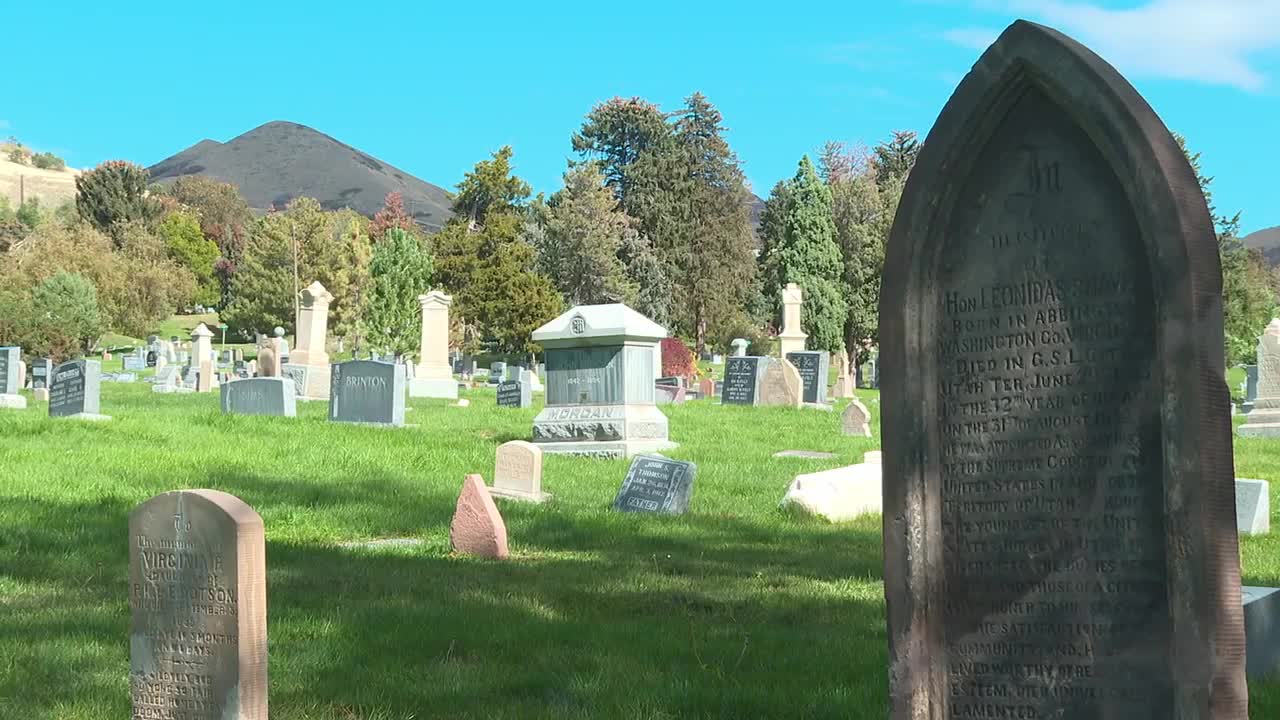SALT LAKE CITY — Behind every headstone is a piece of history. The Utah State Historic Preservation Office makes sure those stories are never forgotten.
Amy Barry is the cemetery program manager, and she oversees more than 700 cemeteries and burial sites. She is the sole person in the program.
“I work with the public, and I work with cemeteries to educate on how to properly clean, level and then repair, so we have a way to be dealing with them in a way that doesn’t cause them harm,” Barry said.
The program started in 2019, and she said since then, she’s done workshops and repaired hundreds of stones.
Barry is introduced to different people — most of them etched in stone — but occasionally, she’s introduced to others who are just as fascinated with those stories as she is.
One of those people is retired archaeologist Monson Shaver.
In 2020, Shaver said he would walk around the Salt Lake City Cemetery as a part of his routine. Over time, he started to wonder about some of the history behind these stones.
“I started wondering if there was a Shaver in this cemetery, and I looked it up and there was,” Shaver said. "There was a Leonidas Shaver.”
The Honorable Leonidas Shaver, Justice of the Utah Territorial Supreme Court from 1852 to 1855, is not actually related to Shaver.
Yet, this Shaver wanted to learn more about his final resting place.
“The gravestone was broken up into four pieces,” Shaver said. "Mostly it was covered in grass, but I could tell it was Leonidas Shaver."
He found it in disarray nearly five years ago. So, when he heard about the state’s cemetery program, he reached out to Barry and they worked to piece it back together over the past year.
Barry said for this project, she had the opportunity to partner with the Public Archeology Program in the State Historic Preservation Office because they run an archaeological field program every year for their students. There, she helped teach them the basics of excavation. From there, they were able to get the covered pieces of the stone up and back to her lab.
"There were a number of things that actually intrigued me about it,” Barry said. "First, this will be the oldest stone I’ve worked on: 1855. Second was the shape of it. It’s really unique and you don’t see that kind of shape for that period throughout the state, really.”
More importantly, they wanted to preserve his story. Shaver and Barry both did their research on the judge.
"He had an ear infection, and he was using an opioid, which was not unusual for the time, and then he died. He was 34. I think that there was some suspicion that he was murdered, so it got kind of interesting. And I see that Brigham Young attended the funeral. He was well respected and well liked,” Shaver said.
Next to Shaver’s stone sit so many others, each with their own unique story waiting to be told.
“I end up working on a lot of those stones that kind of get forgotten,” Barry said. "I get a lot of satisfaction in knowing that we care about all of those stones — not just the ones that have a great story or person, but the ones that just have nobody around. We want to protect those stones as well because we want to protect those stories.”




